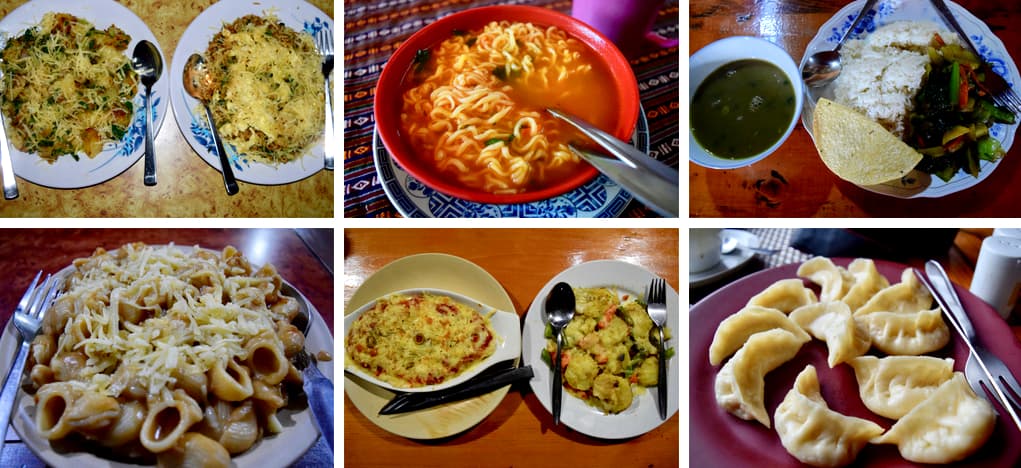Ever wondered what it's actually like to eat and sleep at 17,000 feet? Not exactly a five-star hotel experience, but the Everest Base Camp trek offers something far more valuable: authentic mountain hospitality amid the world's most breathtaking landscapes.
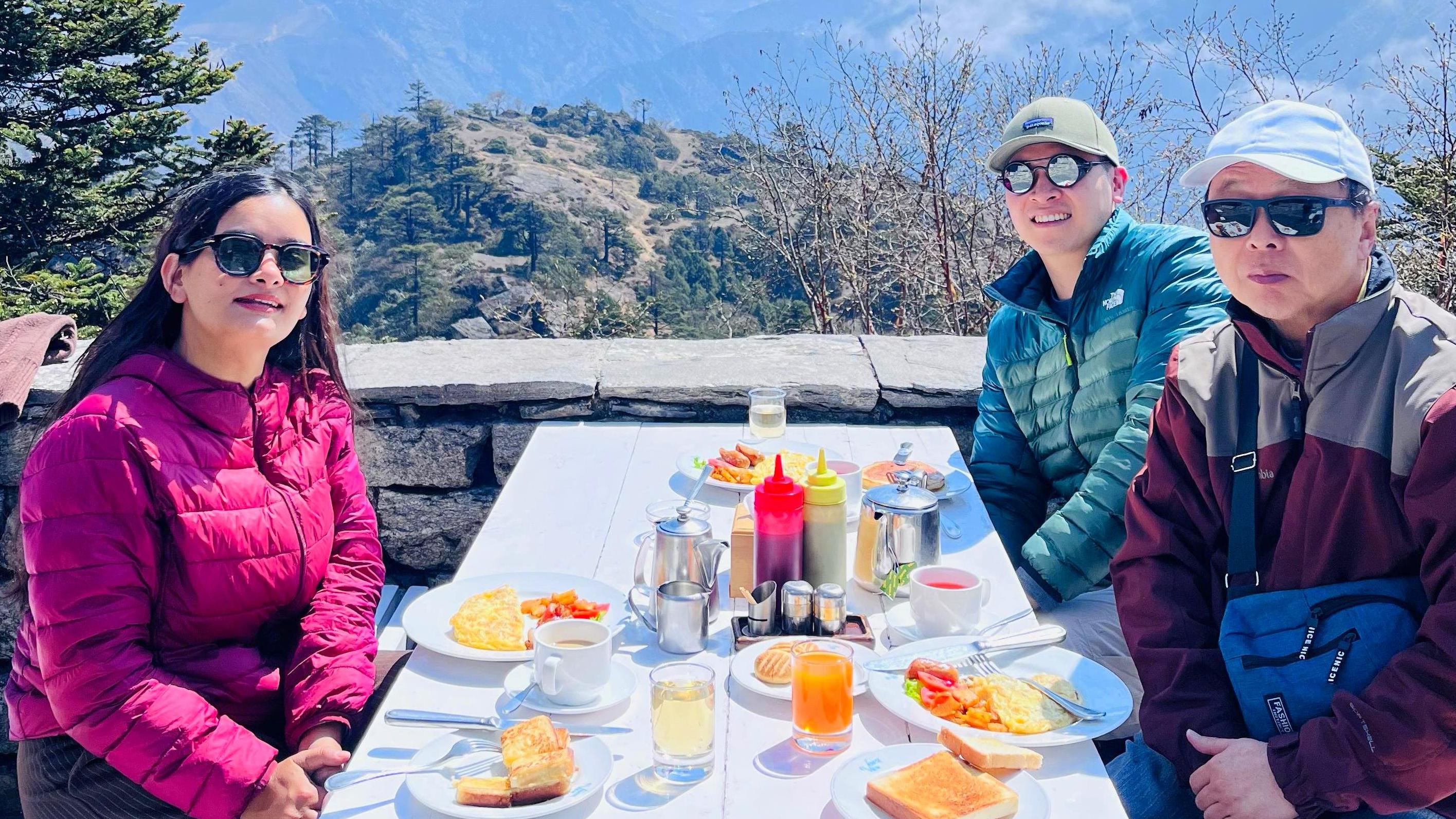
From steaming plates of dal bhat (lentil curry with rice) that fuel your climb to those basic-but-cozy teahouse rooms where every blanket becomes a treasure, your Everest Base Camp trek experience hinges on knowing what to expect.
The journey transforms from merely surviving to genuinely thriving when you understand the unique food, drink, and accommodation options along this legendary trail. Most trekkers stick to the popular teahouses, but did you know there's a surprising range of comfort levels available?
So what exactly should you eat to maintain your energy at altitude without risking stomach troubles? That's where things get interesting...
Understanding Food Options on the Everest Base Camp Trek
Traditional Nepali Cuisine: Experiencing Dal Bhat
Dal Bhat is the heartbeat of Nepali cuisine, and we've seen trekkers fall in love with this simple yet powerful dish during their Everest journey. It's basically rice (bhat) served with lentil soup (dal) and typically comes with vegetables, pickles, and sometimes meat. The beauty of Dal Bhat? It's all-you-can-eat! Locals joke, "Dal Bhat power, 24 hour" – and they're not wrong. This high-carb, protein-rich meal fuels you perfectly for those challenging uphill sections.
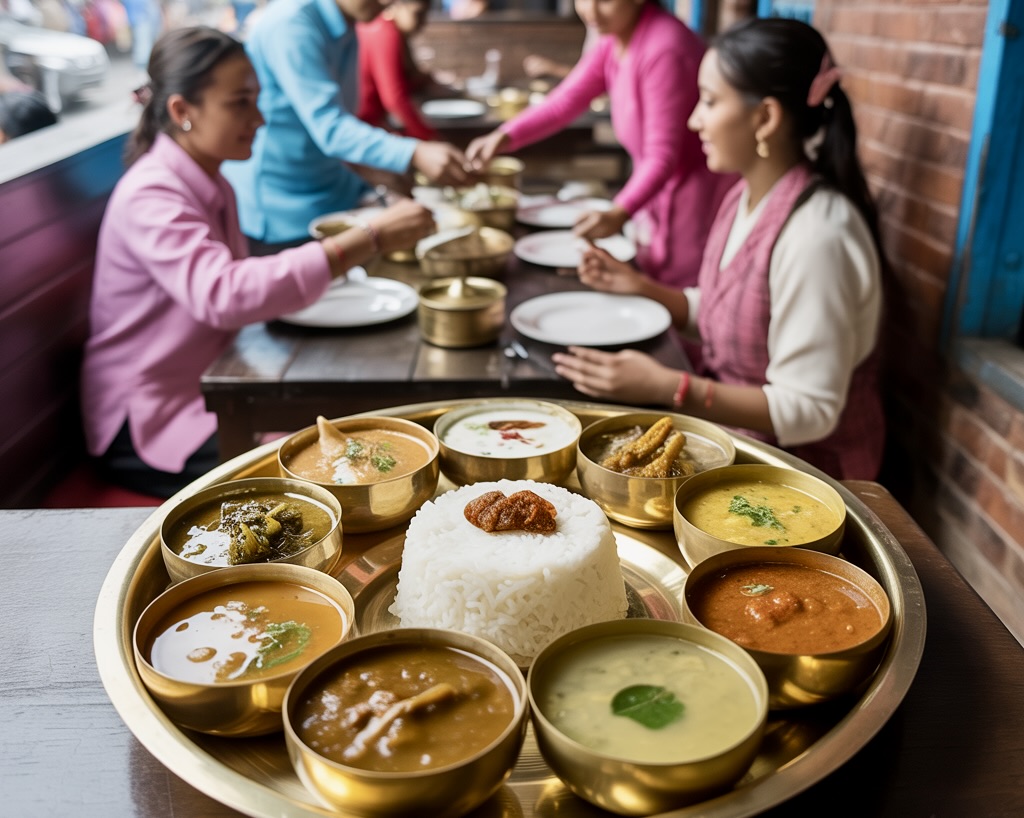
We recommend trying it at least once during your trek. Most tea houses serve it twice daily, and many of our guides swear by it for sustained energy throughout the trek.
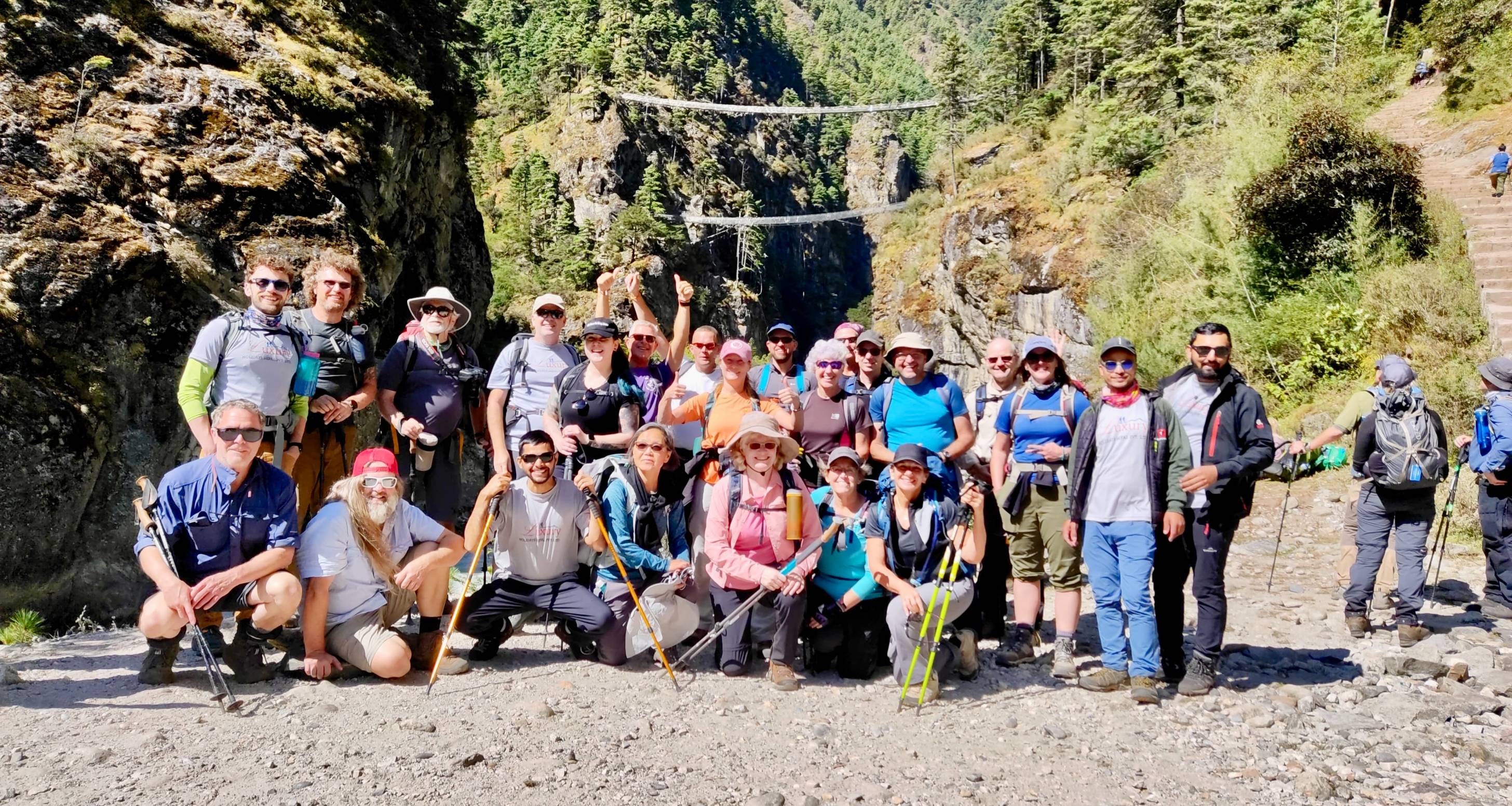
Tea House Menu Varieties
The menu diversity along the EBC route might surprise you. Lower elevations (Lukla to Namche) offer an impressive variety, while options narrow as you climb higher.
Most tea houses provide:
- Soups (garlic is fantastic for acclimatization)
- Noodle dishes (both Nepali and Tibetan styles)
- Potato dishes (momos, hash browns, fries)
- Rice-based meals
- Breakfast options (porridge, eggs, toast)
Pricing increases with altitude, which makes sense when you realize everything must be carried up by porters or yaks. We've noticed menus becoming more standardized in recent years, with many tea houses offering nearly identical options and prices.
Availability of Western Food Options
Craving pizza halfway up the Himalayas? You're in luck! Western food has established a solid presence on the EBC trek route. We find Namche Bazaar particularly impressive, offering everything from decent pizzas and burgers to apple pie and brownies.
Even higher up, you'll find:
- Pasta dishes
- Sandwiches
- Bakery items
- Coffee drinks
Quality varies dramatically, and these options typically cost 2-3 times more than local dishes. Our tip? Save these as occasional treats rather than daily choices. Your wallet (and possibly your stomach) will thank you as transport challenges affect ingredient freshness at higher elevations.
Seasonal Food Variations
Trekking season directly impacts food availability on the mountain. During peak seasons (spring and autumn), we see the fullest menus with fresh supplies regularly brought up from lower regions. Off-season trekkers might find more limited options.
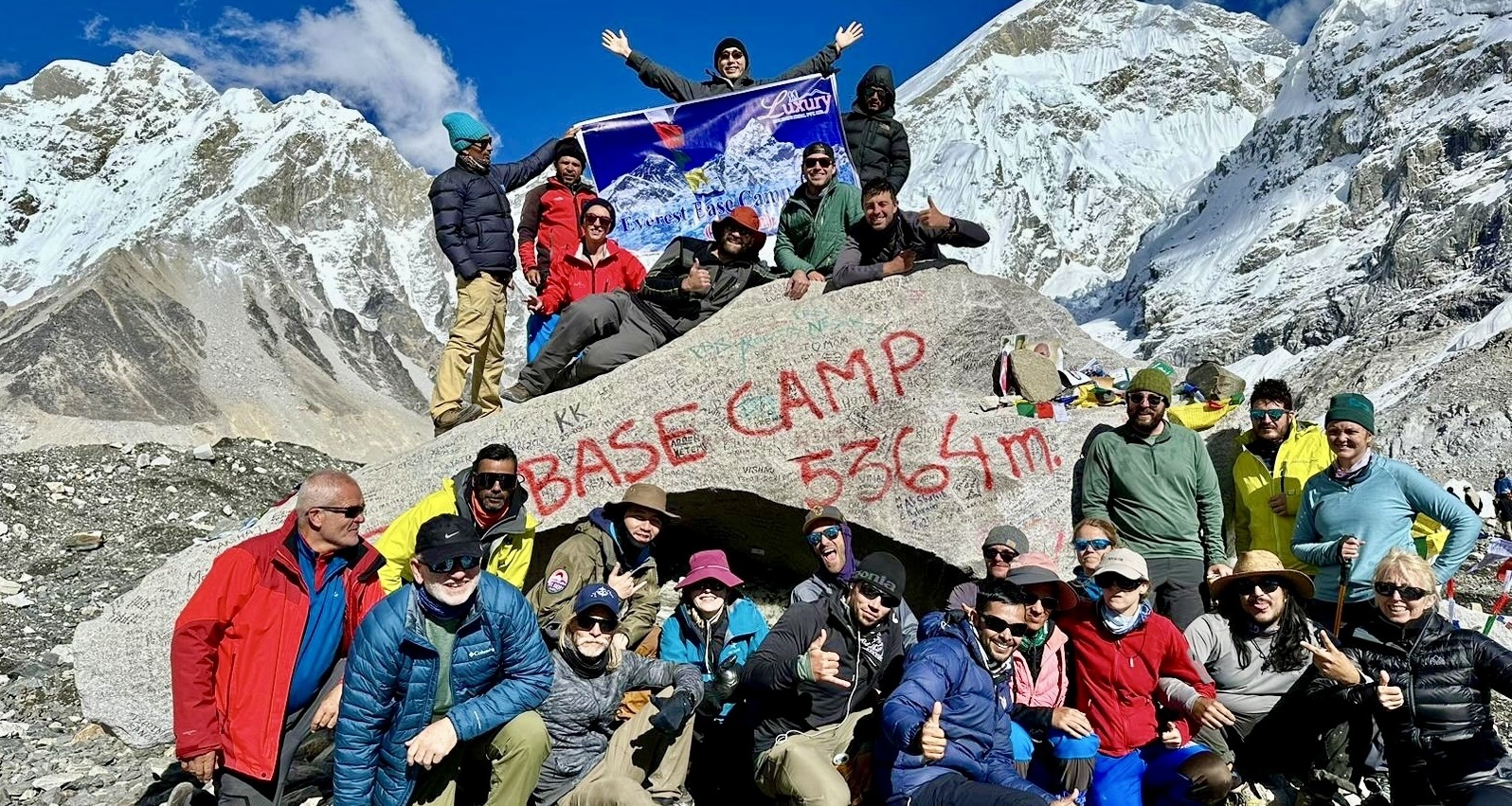
Fall trekkers enjoy the harvest bounty with fresher vegetables, while spring brings different advantages. Winter trekkers should expect more preserved and dried foods as supply routes become challenging.
Regardless of season, fresh proteins become scarce above Namche, with canned tuna and preserved meats becoming the norm. Vegetables get noticeably less fresh at higher elevations, too. We always recommend carrying some favorite snacks and supplements, especially if you have specific dietary requirements.
Hydration and Beverages at High Altitude
Safe Drinking Water Sources and Purification
Water becomes a big deal when you're trekking at high altitude. We've seen many trekkers fall ill from drinking untreated water, and trust us, stomach issues at 4,000 meters are no fun!
On the EBC trek, you'll find water from:
- Mountain streams and springs
- Teahouses and lodges
- Bottled water (though we discourage this due to plastic waste)
- We always recommend purifying all water, even if locals drink it straight. Our preferred methods include:
- Water purification tablets (iodine or chlorine)
- Portable water filters (like LifeStraw or Sawyer)
- UV sterilization pens
- Boiling (most teahouses offer boiled water for about 100-150 NPR per liter)
Tea Varieties in the Khumbu Region
Nothing beats wrapping cold hands around a steaming cup of tea after hours of trekking! The Khumbu region offers some amazing varieties:
- Masala Chai: Spiced tea with cardamom, cinnamon and milk
- Butter Tea: Traditional Sherpa drink with yak butter and salt
- Ginger Tea: Perfect for warming up and settling stomachs
- Lemon Tea: Refreshing and packed with vitamin C
- Mint Tea: Great for digestion issues
Alcoholic Beverages: Precautions at Altitude
We've seen it countless times - trekkers celebrating with alcohol only to suffer terribly the next day. Alcohol and high altitude are a risky combo.
Drinking at altitude:
- Dehydrates you faster
- Worsens altitude sickness symptoms
- Impairs judgment
- Affects sleep quality
If you must drink, we suggest waiting until you're acclimatized, limiting yourself to one drink, and doubling your water intake.
Hot Drinks for Acclimatization Support
Hot beverages do more than just warm you up - they're vital acclimatization allies! We recommend:
- Garlic Soup: A local favorite believed to help with altitude adjustment
- Hot Lemon Water with Honey: Soothes sore throats from dry air
- Ginger Tea: Reduces nausea and improves circulation
- Hot Chocolate: Comforting calorie boost
- Herbal Teas: Various options for hydration without caffeine
Chang and Raksi: Local Alcoholic Specialties
The local brews have been part of Sherpa culture for centuries. While we suggest caution, trying them in moderation offers cultural insight.
Chang: A milky, slightly sour beer made from fermented rice, millet or barley. Traditionally served warm in metal containers.
Raksi: A strong distilled spirit similar to moonshine. Often homemade and can be quite potent (up to 45% alcohol).
These drinks play important roles in Sherpa ceremonies and celebrations. If invited to try them, sip slowly and remember the altitude magnifies effects!
Accommodation Types Along the Trek
Tea Houses: The Standard Everest Experience
Hiking the Everest Base Camp trek means staying in traditional Nepalese tea houses along the way. We've seen these charming, family-run lodges become the backbone of trekking in the region. Most are simple wooden structures offering basic but cozy rooms with twin beds and minimal furnishings.
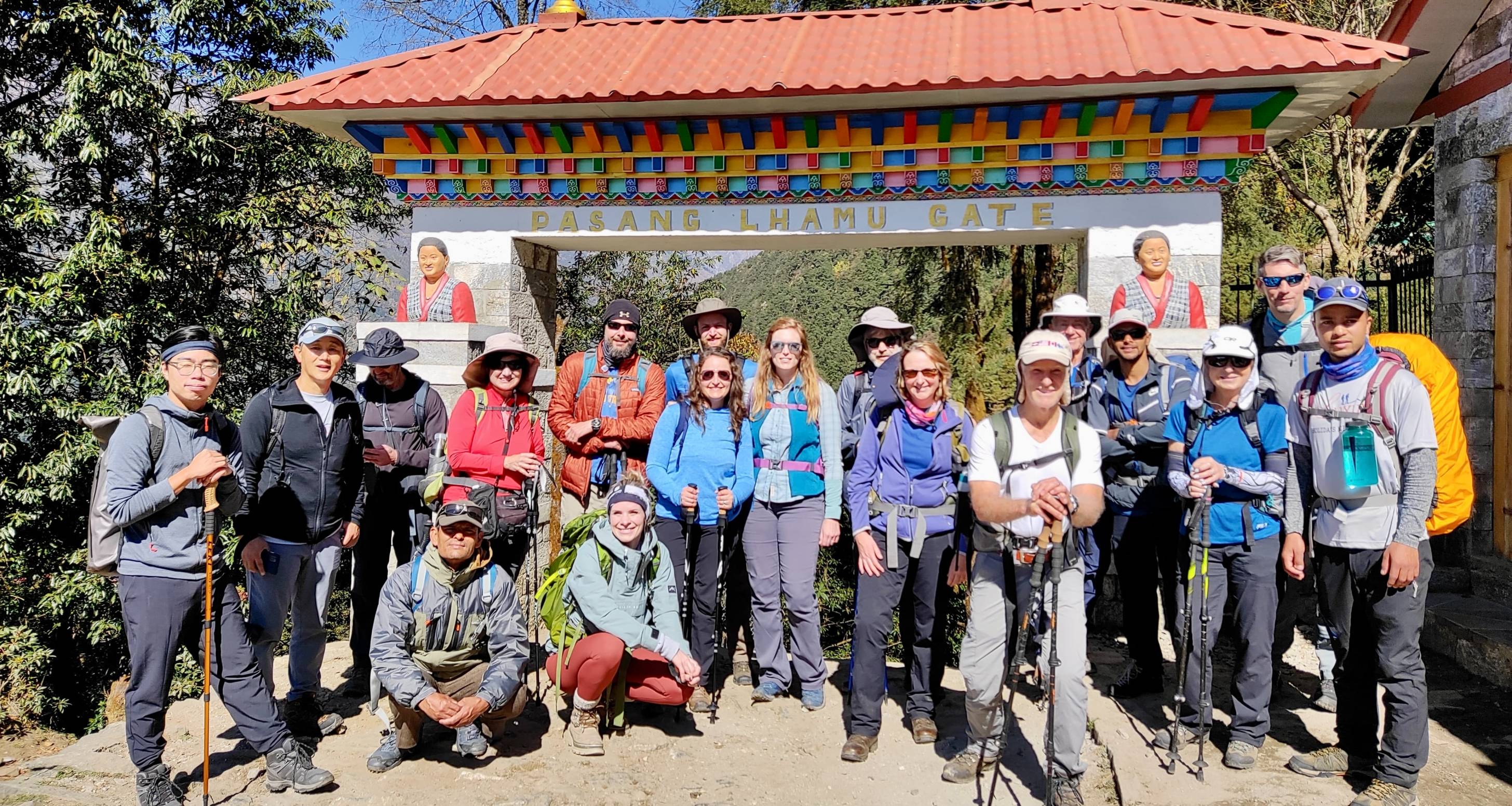
What makes tea houses special? It's the communal dining areas where trekkers gather around wood-burning stoves, sharing stories while warming up after a long day on the trail. We always tell our guests that these social spaces create some of the most memorable moments of the journey.
Don't expect luxury at standard tea houses - they're rustic, authentic, and sometimes a bit drafty! But that's part of the genuine Himalayan experience we love to share with our trekkers.
Luxury Lodges for Premium Comfort
For those who prefer not to rough it, we're thrilled to offer premium accommodation options on the EBC trek. Luxury lodges have sprung up in major stops like Namche Bazaar, Phakding, and Lukla.
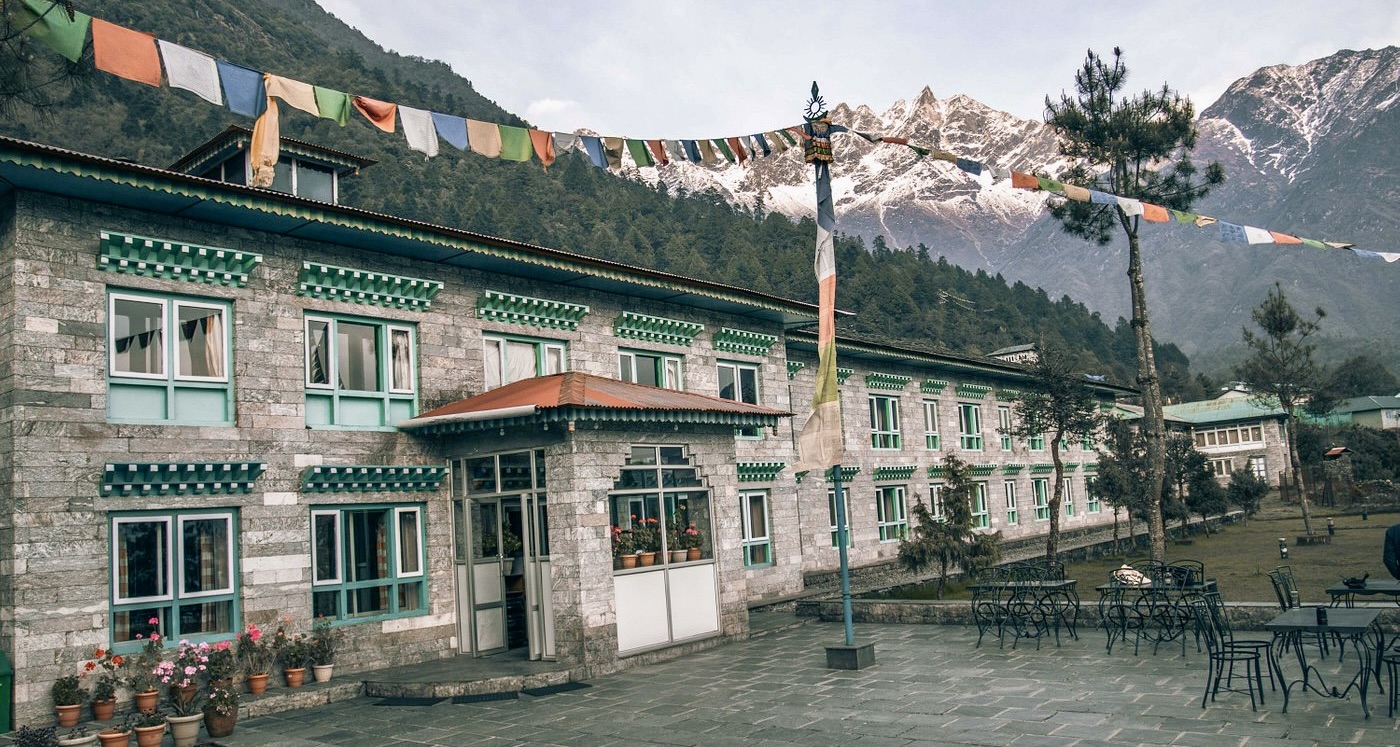
These upscale properties feature amenities that standard tea houses don't:
- Electric blankets for those cold mountain nights
- En-suite bathrooms with hot showers
- More sophisticated dining options
- Reliable electricity and sometimes even Wi-Fi
Our premium packages include stays at lodges like Mountain Lodges of Nepal and Everest Summit Lodges. They cost more, but after a grueling day of trekking, many of our clients tell us that a hot shower and comfortable bed were worth every penny.
Room Types and Availability by Season
Room availability fluctuates dramatically with the seasons, and we've learned this the hard way over our years of organizing treks.
During peak seasons (October-November and March-May), rooms fill up quickly. We always book accommodations well in advance for our groups, but independent trekkers might find themselves sleeping in dining rooms if they arrive late in the day.
Most tea houses offer:
- Twin sharing rooms (the most common)
- Limited single rooms (rare and usually the same price as doubles)
- Occasional triple rooms for families or groups
As you climb higher, options become more limited. Above Namche Bazaar, even the nicest lodges offer fewer amenities and less variety in room types.
Bathroom and Shower Facilities
Let's talk about something most trekkers worry about - bathrooms! We won't sugarcoat it: bathroom facilities get more basic the higher you climb.
In lower elevation tea houses and luxury lodges, you'll find:
- Western-style flush toilets
- Hot showers (often for an extra fee of $3-5)
- Some private bathrooms in premium accommodations
Above 4,000 meters, expect:
- Shared toilet facilities
- Simple squat toilets in many places
- Cold water or no water facilities
- Limited or no shower options at the highest tea houses
We always recommend bringing wet wipes, hand sanitizer, and a quick-dry towel. And our pro tip? Pay for that hot shower when it's available - you won't regret it after a dusty day on the trail!
Making the Most of Tea House Stays
Booking Considerations During Peak Seasons
The Everest region gets crazy busy during peak trekking seasons (March-May and September-November). We've seen trekkers scrambling for rooms at higher elevations like Lobuche and Gorak Shep. Trust us, it's not fun arriving exhausted only to find "no vacancy" signs everywhere.
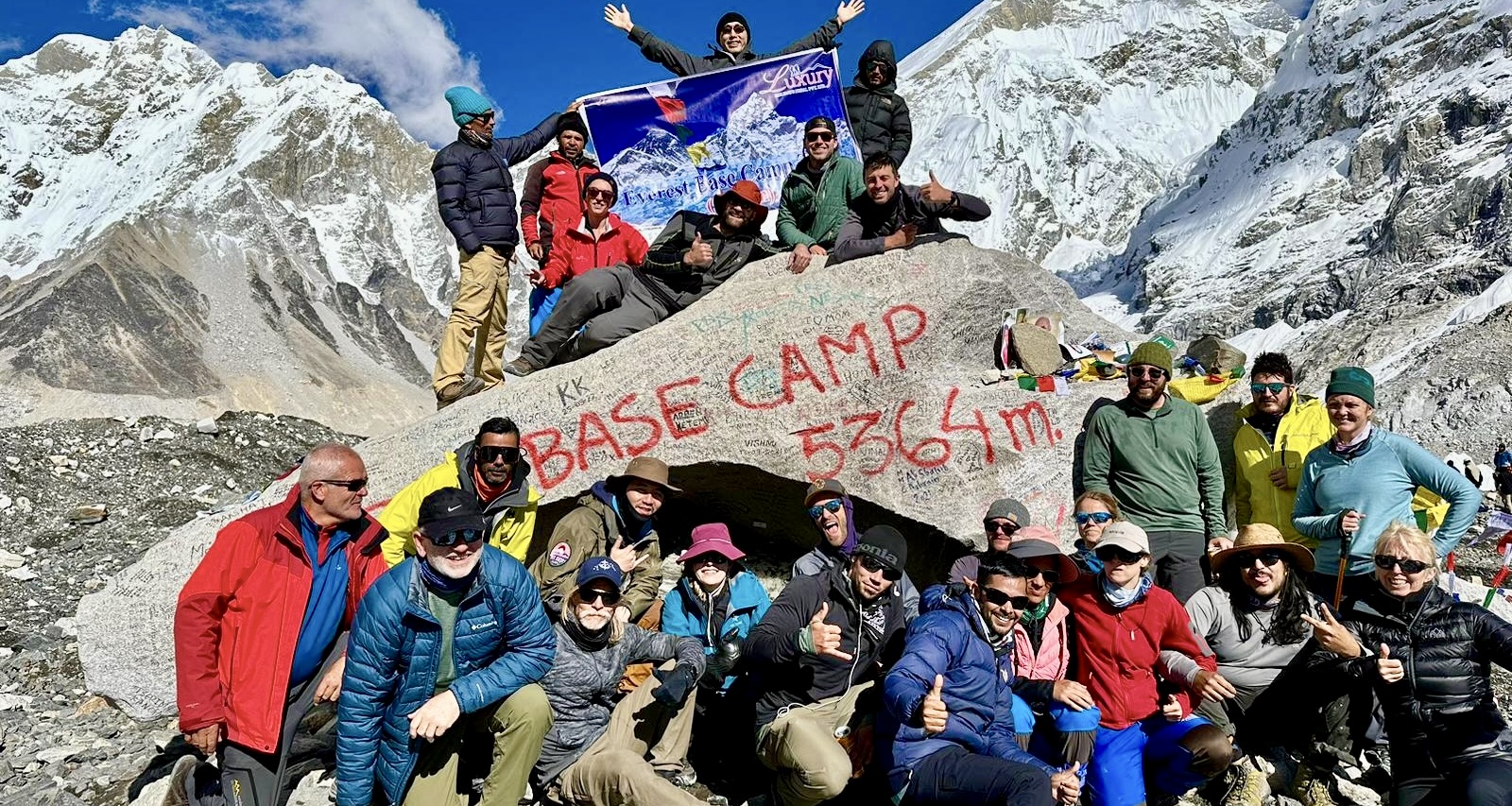
We always recommend booking tea houses in advance during these periods, especially if you're trekking without a guide. Our connections with local tea house owners have saved our clients countless times. For solo trekkers, arriving early (before 3pm) dramatically improves your chances of securing accommodation.
Some tea houses now take advance bookings via phone, though this system isn't universal. When all else fails, floor space might be offered – not ideal, but better than camping in sub-zero temperatures!
Tea House Etiquette and Customs
Respecting local customs goes a long way on the trek. We always remove our shoes before entering sleeping areas – a practice that keeps rooms cleaner and shows respect to our hosts.
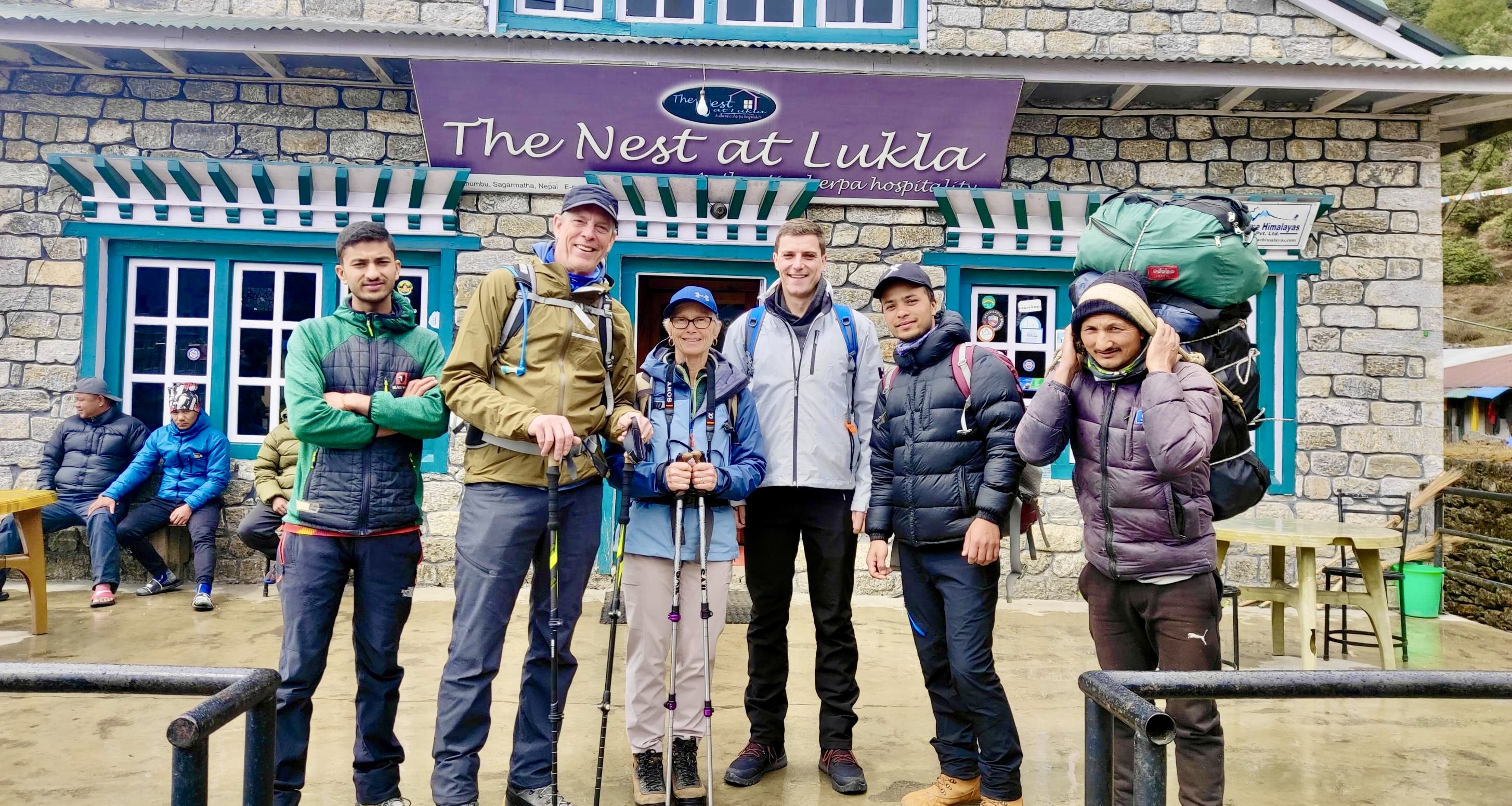
The dining hall is the heart of every tea house. We've found that purchasing meals where you sleep is expected (and fair), as accommodation prices are kept artificially low. Many owners only break even through food sales.
Nepali hospitality is legendary, but we still see trekkers making basic mistakes. Some tea house etiquette essentials:
- Speak softly after 9 pm
- Ask before taking photos of locals
- Try greeting locals with "Namaste" (hands pressed together)
- Avoid romantic displays of affection in public
- Tip staff for exceptional service
Charging Electronics and Wi-Fi Access
Connectivity in the mountains has improved dramatically in recent years. We're consistently surprised by the availability of Wi-Fi, though it comes with caveats.
Most tea houses offer charging facilities, typically charging $2-5 per device. The catch? Electricity often runs only during certain hours, usually when the solar panels have collected enough juice or when generators run (typically evenings).
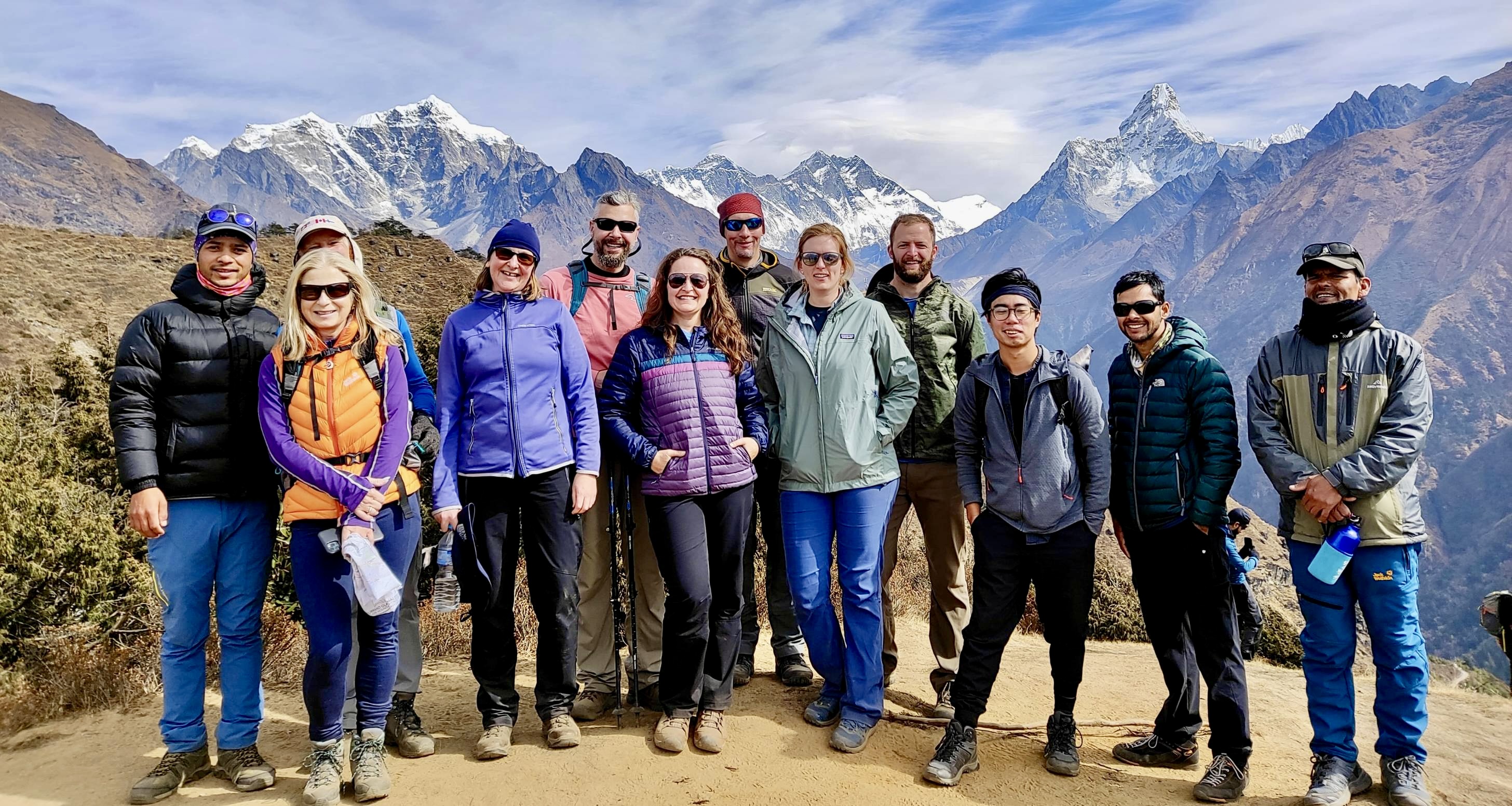
Wi-Fi availability increases yearly, but don't expect home-like speeds. We've found the connection strength weakens the higher you climb. At Gorak Shep (5,180m), expect painfully slow connections – enough for a quick message home but forget about video calls or Instagram uploads.
Pro tip: We always pack a power bank (20,000mAh minimum) and put devices in airplane mode to conserve battery. Some trekkers bring solar chargers, which work wonderfully on clear days.
Dietary Considerations for Trekkers
Vegetarian and Vegan Options
Finding plant-based meals on the Everest Base Camp trek isn't the challenge many trekkers expect. We've seen the dining options evolve dramatically over the years. Most teahouses now offer dal bhat (lentil soup with rice), vegetable fried rice, vegetable momos (dumplings), and pasta with tomato sauce. These hearty, carb-rich meals are perfect for replenishing energy.
For vegans, we recommend communicating your dietary needs clearly to your guide before starting the trek. Dairy products like milk, cheese, and butter are common in Nepali cooking, but substitutions can usually be arranged with advance notice.
Managing Food Allergies at High Altitude
Dealing with food allergies gets trickier at high altitudes. We always suggest bringing a written card in Nepali that clearly states your allergies. Show this to teahouse owners and your guide.
Common allergens like nuts, gluten, and dairy can be avoided if you:
- Discuss your needs with us before booking
- Bring some emergency food supplies
- Learn key phrases in Nepali to communicate your allergies
Our guides carry basic medical supplies, including antihistamines, but if you have severe allergies, bring your own medication, including EpiPens.
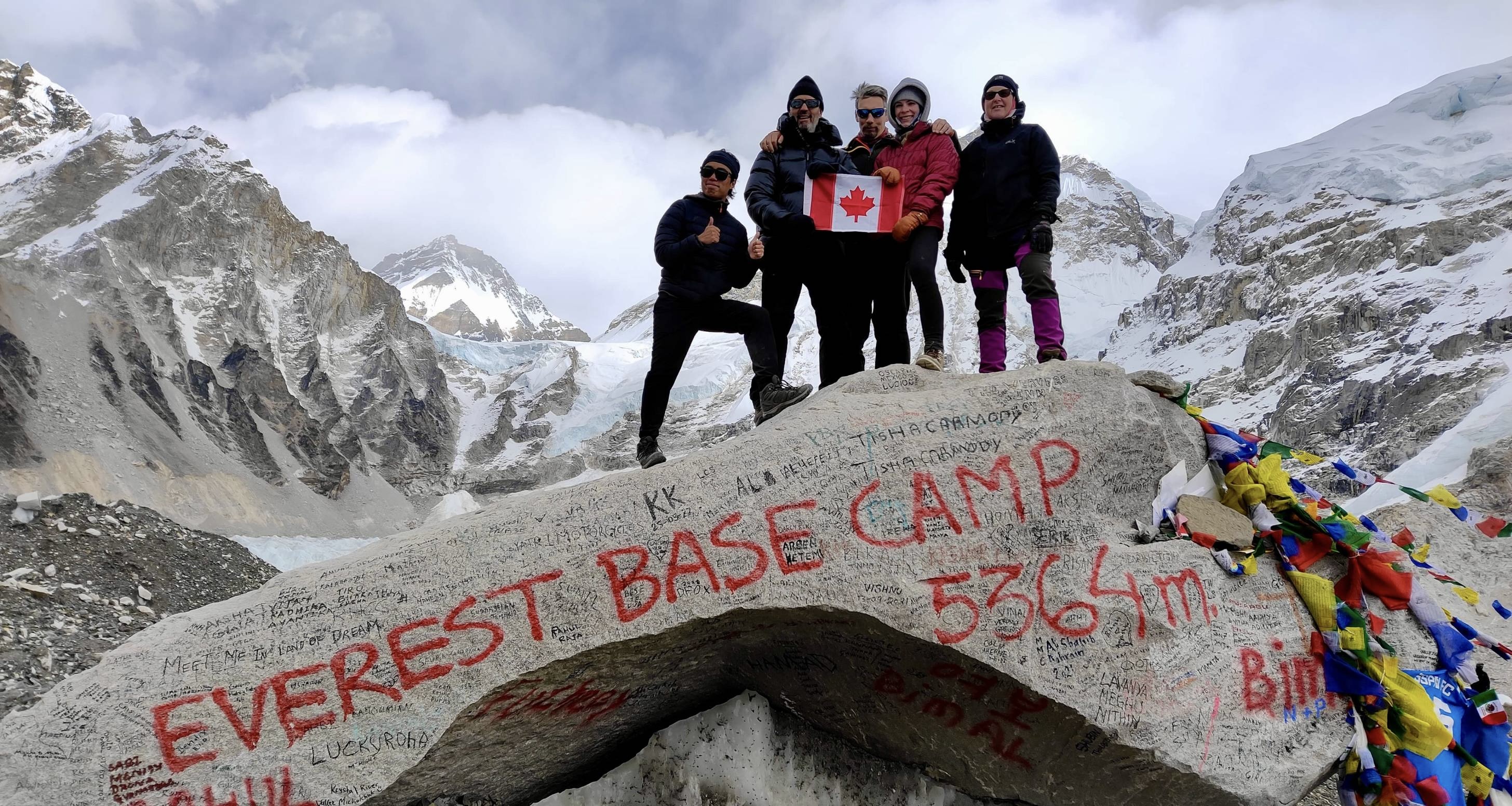
Calorie Requirements for High-Altitude Trekking
Your body burns calories like crazy at altitude! We typically see trekkers needing 3,500-5,000 calories daily, nearly double normal requirements. This happens because:
- Your metabolism speeds up at altitude
- Cold weather forces your body to work harder
- You're physically active 6-8 hours daily
- Your body uses extra energy to acclimatize
Don't skimp on calories during the trek. We encourage eating regular meals plus snacks between them. Carbohydrates should make up about 60-70% of your intake, with adequate protein for muscle recovery.
Avoiding Stomach Issues and Food Safety
Nothing ruins a trek faster than stomach problems. We've learned a few tricks over the years of guiding:
- Stick to cooked foods, especially above Namche Bazaar
- Avoid raw vegetables and unpeeled fruits
- Drink only bottled, boiled, or treated water
- Use hand sanitizer religiously before meals
- Eat at busier teahouses where food turnover is higher
The higher you go, the more conservative you should be with food choices. Your digestive system already works harder at altitude, so play it safe. We also recommend probiotics before and during your trek to maintain gut health.
Luxury Food and Accommodation Options
Premium Lodges by Luxury Holidays Nepal
We've carefully selected the finest accommodations along the Everest Base Camp trek route. Our premium lodges offer a stark contrast to the basic teahouses most trekkers experience. Think private bathrooms with hot showers, electric blankets, and comfortable beds with quality linens after a long day of trekking.
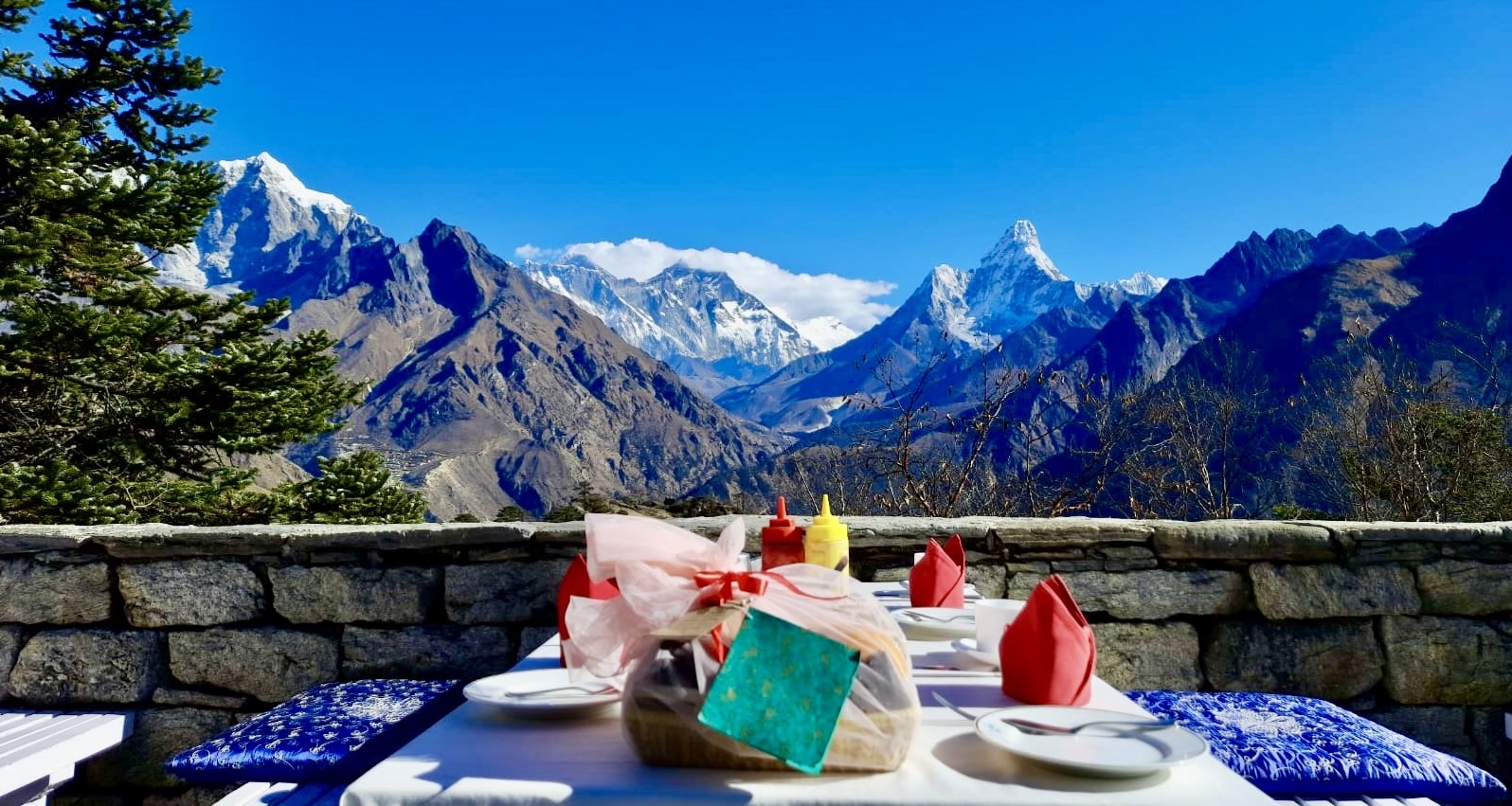
Our exclusive partnerships with establishments like Mountain Lodges of Nepal and Everest Summit Lodges mean our clients enjoy priority booking and special amenities even during peak season. These lodges feature spacious dining areas with panoramic mountain views, reliable Wi-Fi, and charging stations for your devices.
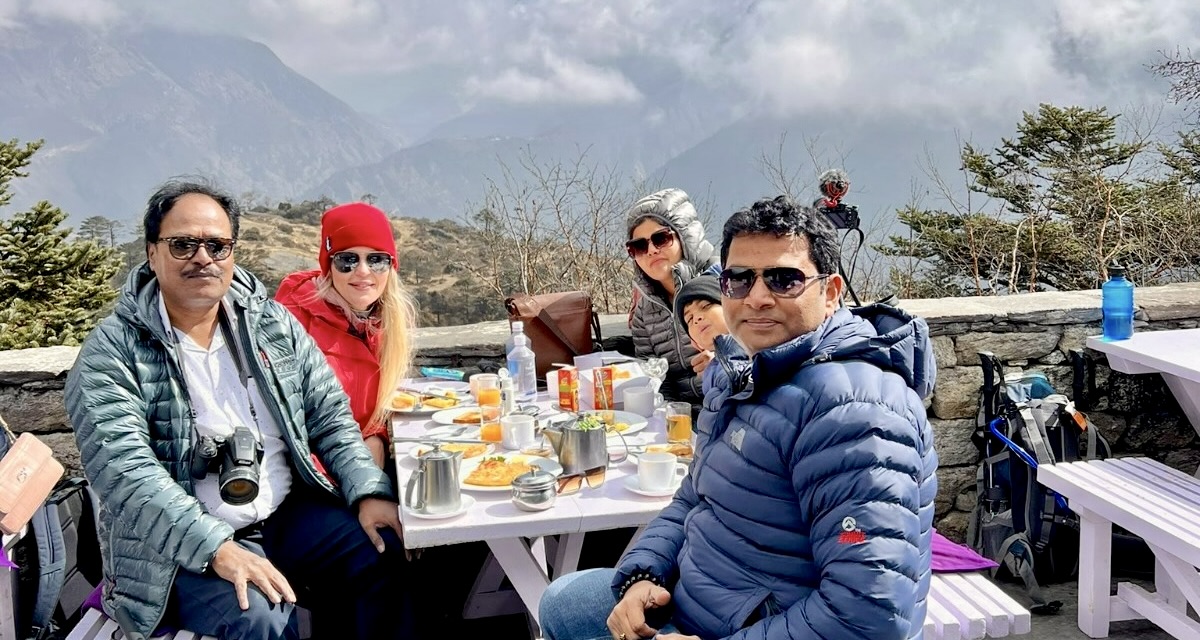
Unlike standard accommodations, our premium lodges employ trained staff who understand international service standards, ensuring your stay exceeds expectations.
Gourmet Dining Experiences on the Trail
The culinary journey we provide transforms the typical trekking food experience. Working with talented local chefs, we've developed menus that blend traditional Nepalese flavors with international cuisine.
Breakfast includes freshly baked pastries, organic eggs, and barista-quality coffee. Dinners feature multi-course meals with ingredients we transport from Kathmandu to ensure quality and variety.
Our signature dining experiences include:
- Himalayan fusion cuisine nights
- Traditional Sherpa family meals in private homes
- Celebratory summit dinners with champagne
We never compromise on food quality, even at higher altitudes where most operators serve basic meals.
Private Chef Options for Group Treks
For group treks of six or more, we offer exclusive private chef services. Our professional chefs travel with your group, preparing customized meals throughout the journey.
These culinary experts are trained in high-altitude cooking techniques and bring specialized equipment to create restaurant-quality meals in remote locations. They maintain strict hygiene standards exceeding local regulations.
Having a private chef means flexible meal times that align with your group's trekking schedule rather than fixed teahouse serving hours. This personalized service creates a consistent dining experience regardless of location.
Customized Meal Plans for Dietary Preferences
We understand dietary requirements shouldn't limit your Everest adventure. Our pre-trek consultations include detailed discussions about your nutritional needs and preferences.
Our kitchen teams prepare specialized meals for:
- Vegan and vegetarian diets
- Gluten-free requirements
- Keto and low-carb options
- Religious dietary restrictions
- Allergy accommodations
We import specialty ingredients and supplements not available locally to ensure your nutritional needs are met. Our meal plans are designed with altitude-appropriate nutrition in mind, helping optimize your body's adaptation and energy levels throughout the trek.
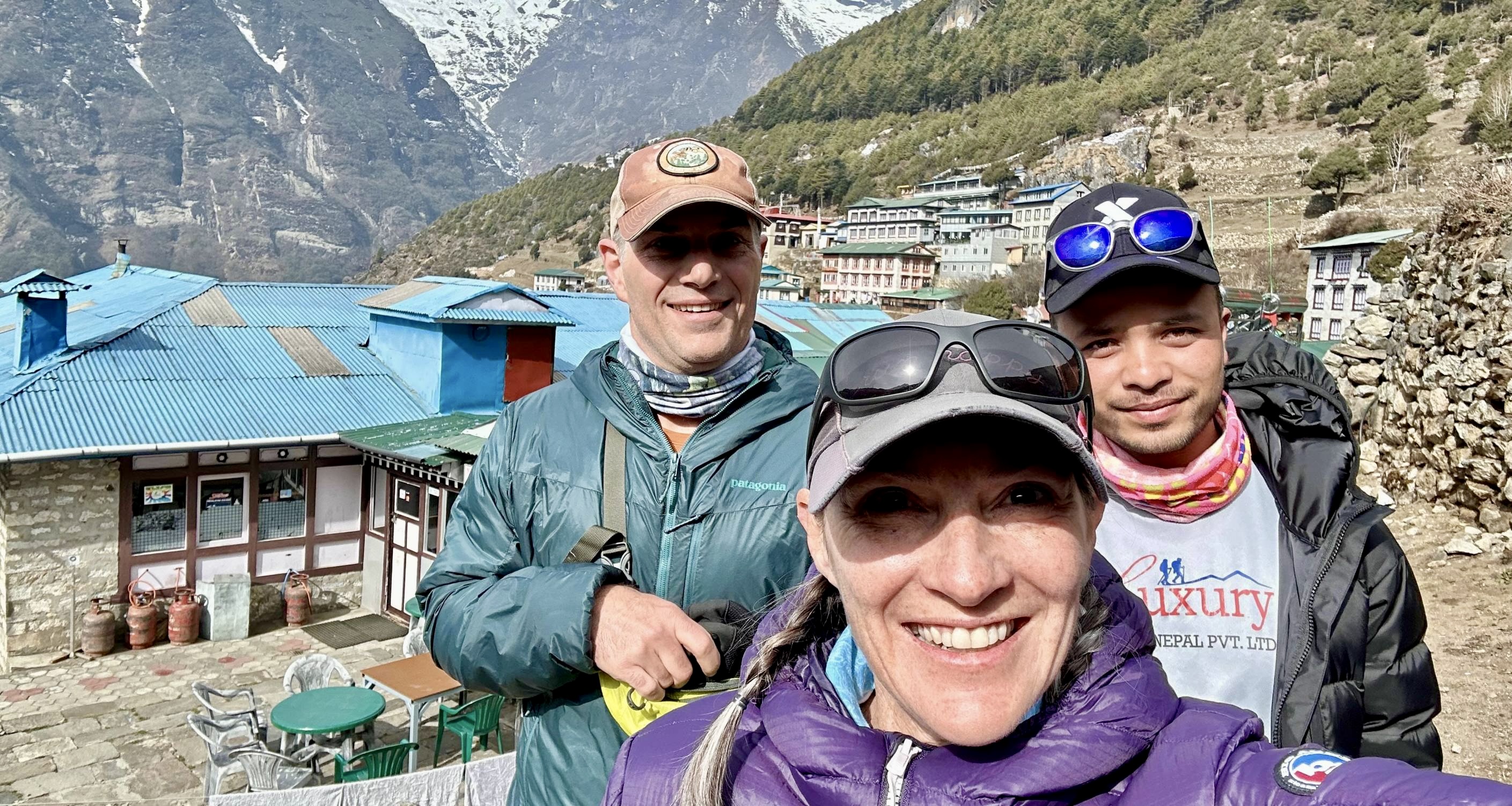
The Culinary and Comfort Journey to Everest Base Camp
The Everest Base Camp trek offers more than just breathtaking views—it provides a unique cultural experience through its food, beverages, and accommodation options. From traditional teahouse meals featuring dal bhat to crucial hydration strategies at high altitudes, trekkers can find nourishment that sustains their challenging journey. The variety of lodging options, from basic teahouses to luxury lodges, ensures that travelers with different preferences and budgets can find suitable accommodation while making meaningful connections with fellow adventurers and locals alike.
As you plan your journey to the roof of the world, remember that proper preparation regarding food choices and accommodation expectations will significantly enhance your trekking experience. Whether you're adhering to specific dietary requirements, seeking comfort in luxury options, or embracing the authentic teahouse culture, the Everest region welcomes all with its warm hospitality. Pack your sense of adventure along with practical expectations, and you'll find that the culinary and accommodation aspects of the trek become cherished memories of your Himalayan adventure.
Contact us today to begin planning your personalized Everest adventure with a team that prioritizes your experience every step of the way.
If you need any further information, please contact us by email: [email protected], Phone: +977- 985 100 5129 (WhatsApp)

